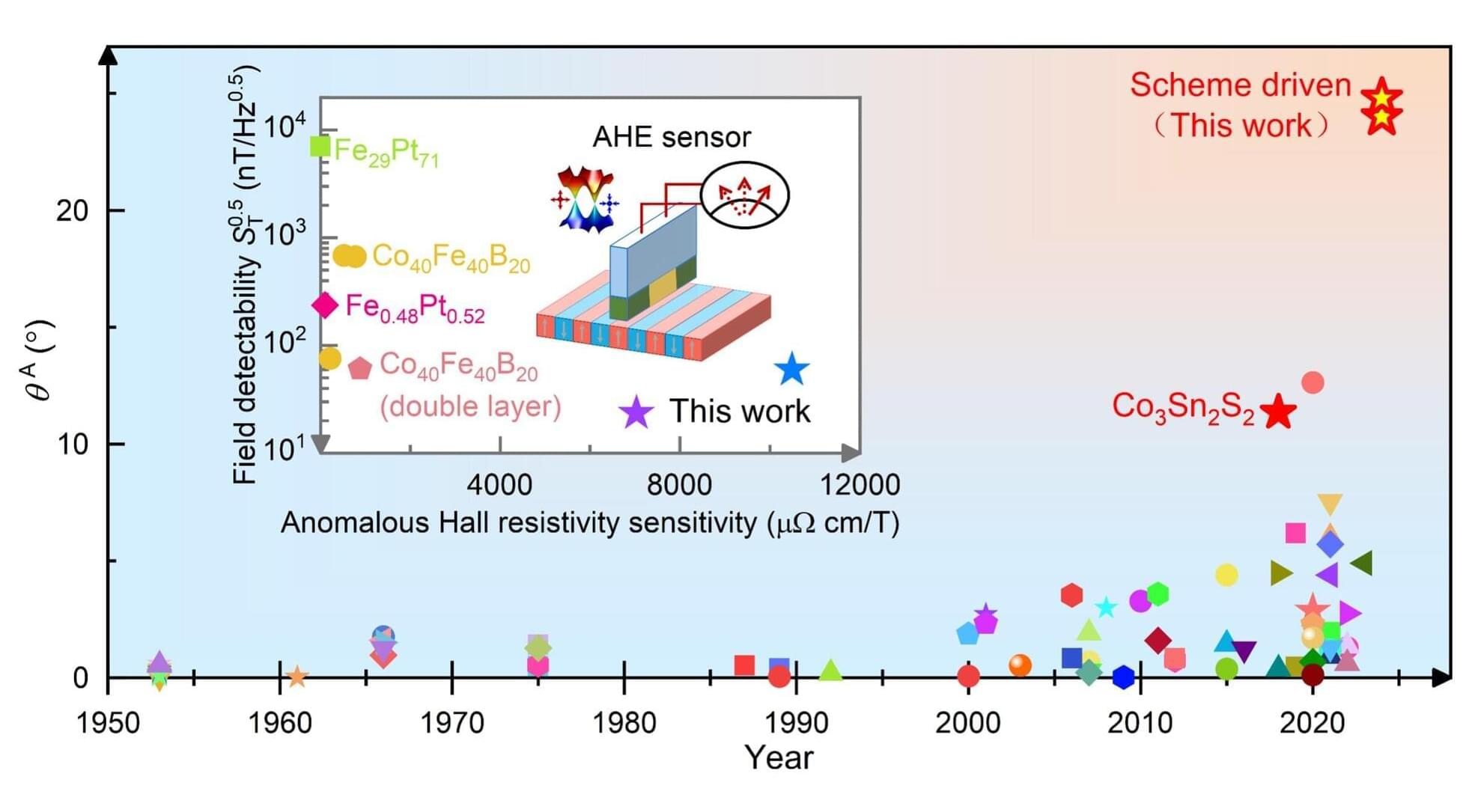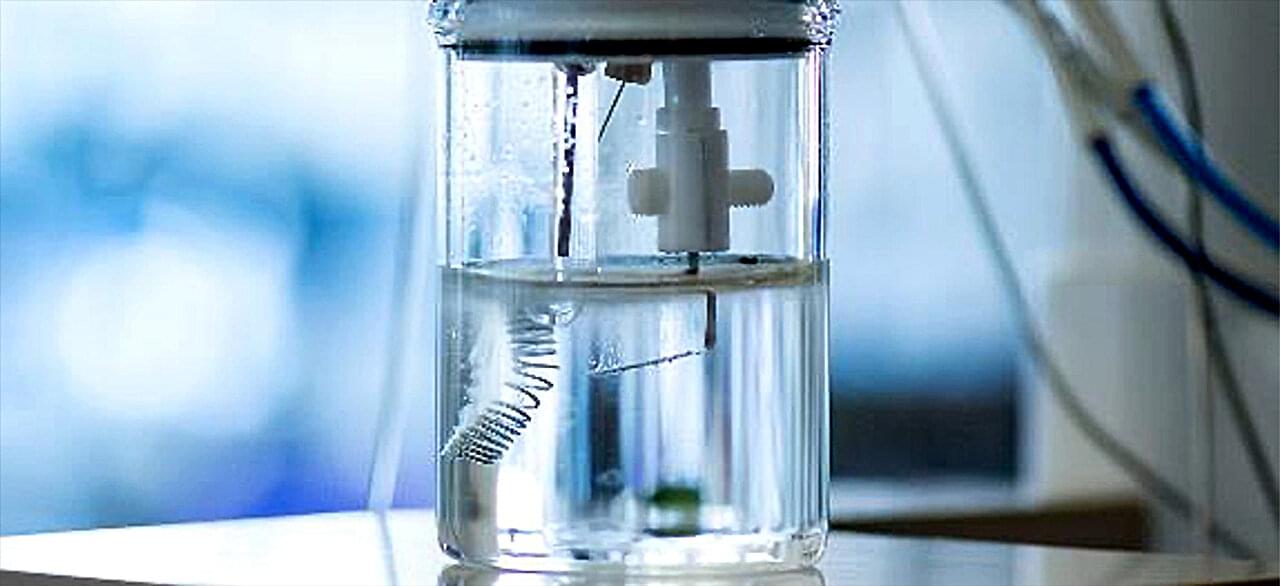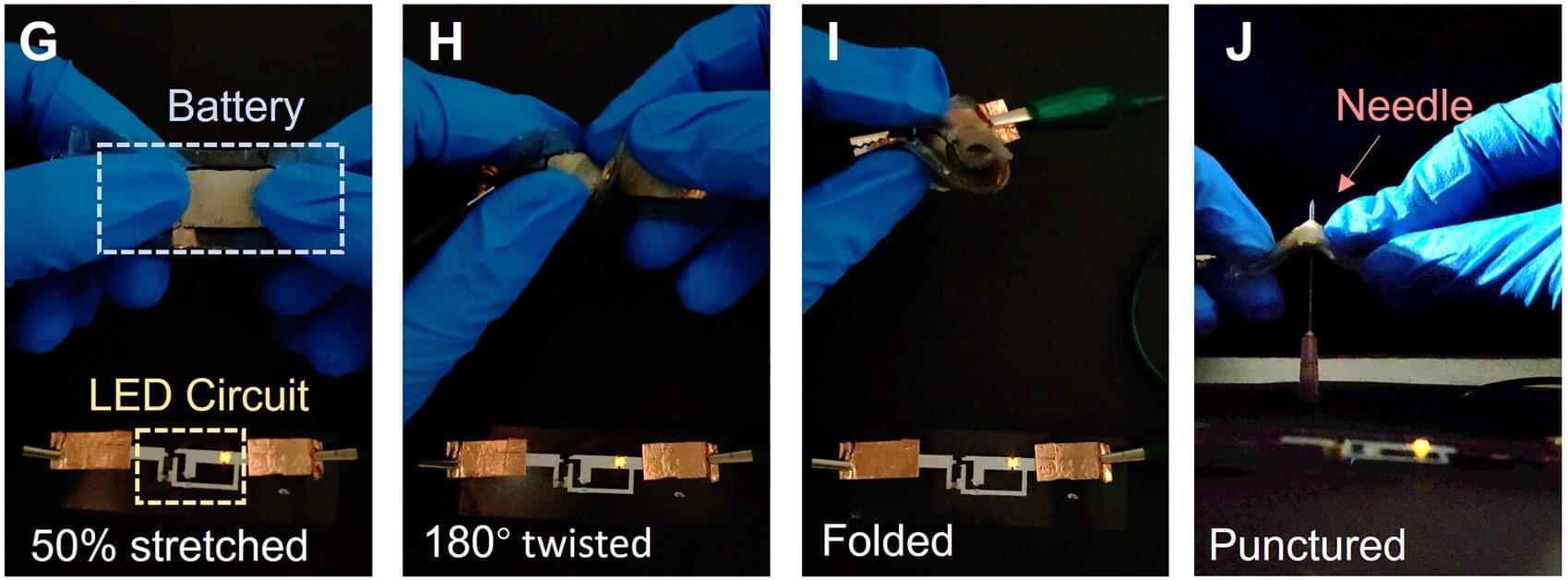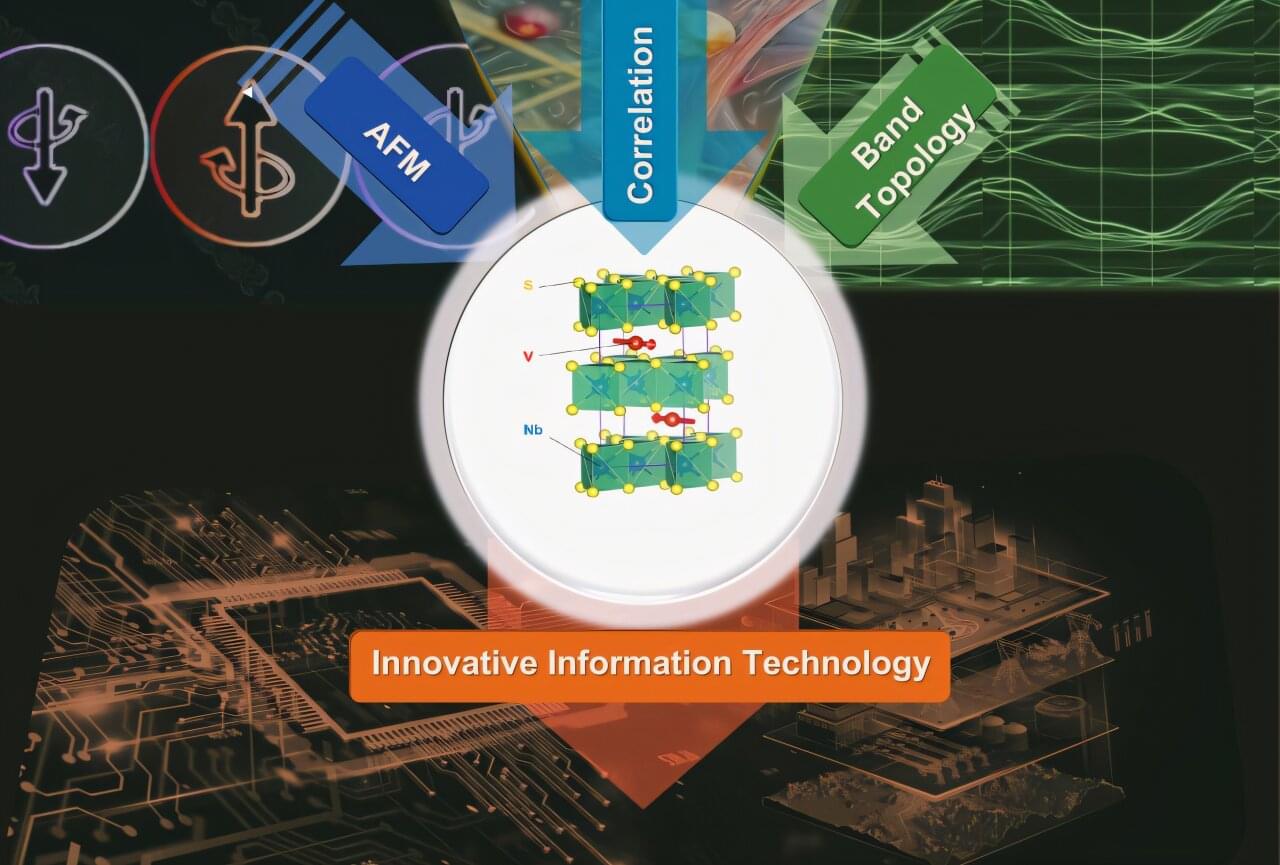When an electric current passes through some materials, it generates a voltage perpendicular to the direction in which the current is flowing and of an applied magnetic field. This physical phenomenon, known as the anomalous Hall effect, has been linked to the intrinsic properties of some materials.
The efficiency with which a longitudinal current drives a transverse spin-polarized current in these materials is referred to as the anomalous Hall angle (θA). In many conventional magnetic materials, this angle is typically very small, which in turn limits the sensitivity of sensors and other devices developed using these materials.
Researchers at the Chinese Academy of Sciences have introduced a new mathematical model that allows them to modulate the θA in the magnetic topological semimetal Co3Sn2S2.







